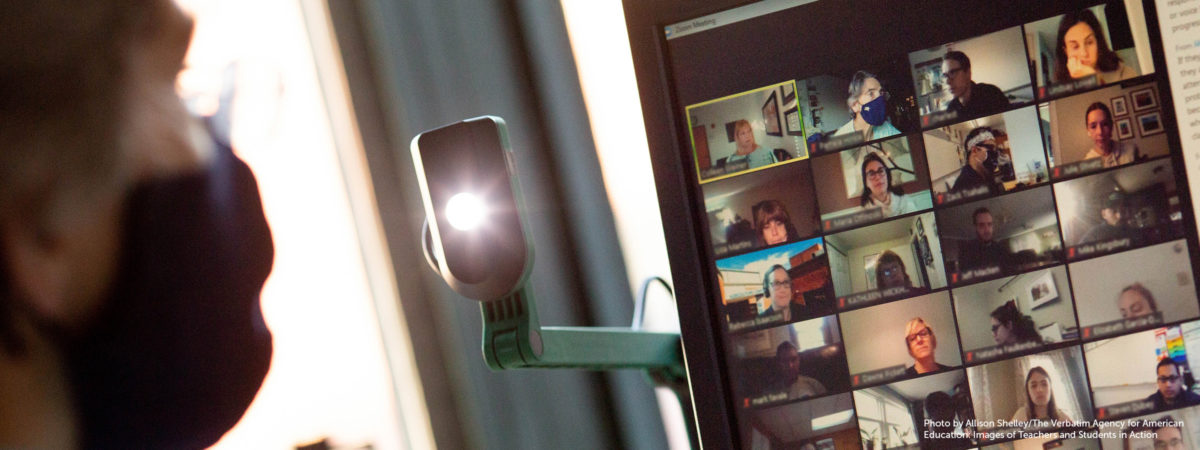
I was inspired to share this idea and to create a community of educators who support one another and share pieces of their e-Portfolios with each other throughout the year. Educators are experiencing intense learning curves as we scramble to identify effective strategies for teaching and learning via digital platforms; many veteran teachers have expressed that they feel like it is their first year teaching as they juggle many unknown variables. The COVID-19 crisis has created a critical need for teachers to leave their teaching silos, open their doors, and seek out collaborative learning opportunities. The learning curve is simply too steep to go it alone.
In response to the challenges experienced by teaching colleagues, I created and hosted an e-Portfolio workshop in December 2020. e-Portfolios are different from journaling and documenting evidence for a performance framework. The difference is reflected in the intentional learning that comes from recording professional growth that includes identifying what was learned along with a decision and/or change in action or behavior. Creating and maintaining an e-Portfolio provides the following primary benefits:
“The e-Portfolio workshop is a wonderful roadmap designed to set professional educators up for documenting their current thoughts and beliefs regarding their practice and for reflection as time goes on and the portfolio grows,” said Amanda Arceo, a math and science learning coordinator at Nye County School District in Nevada. “It’s imperative that educators stay up to date on best practices and continue to engage in their own learning as current events are changing the landscape of education and forcing us into circumstances that require outside-the-box thinking. Keeping an e-Portfolio allows an educator to distill what is integral to his/her beliefs and realign practice according to essential goals.”
“The e-Portfolio workshop not only has helped me to get organized in terms of planning and available resources, but it has shown me what I have already accomplished and reminded me of all the innovative things I have already started doing,” said Roxanne Johnson, a teacher at Findlay Middle School in Las Vegas. “By having all of my work in a portfolio where I have the ability to reflect on my inventory, I am working smarter, not harder.”
As teachers who attended the workshop learned, creating an e-Portfolio is both a beneficial and facilitated learning process. There are three simple steps to begin creating your own e-Portfolio for professional learning:
Teachers know how crucial it is for our students to make mistakes—after all, that is when learning occurs. Teachers know how valuable reflection is for students to strengthen connections and relationships within content, and to increase multiple pathways in their brains for greater retention. Yet educators often do not take the time to engage in either of these structured learning opportunities themselves to improve their craft. Therefore, my learning community and I will continue to meet virtually each month to celebrate successes and to discuss teaching and learning obstacles, lessons learned, pivots in decisions, and outcomes from reflections. This will allow us the space and opportunity to leverage the learning of our peers, as well as our own personal experiences that we capture within our e-Portfolios.
Are you an instructional coach looking to connect with other coaches to share best practices and strategies for supporting teachers? Join Digital Promise’s Powerful Learning Community for Coaches!